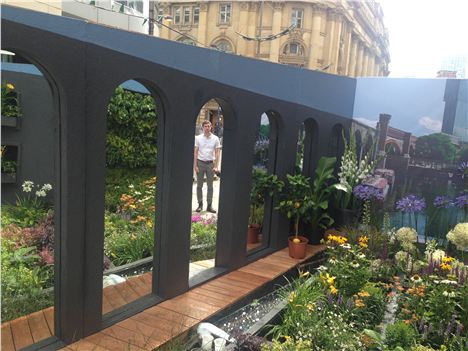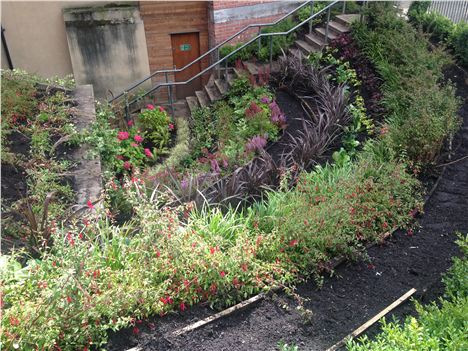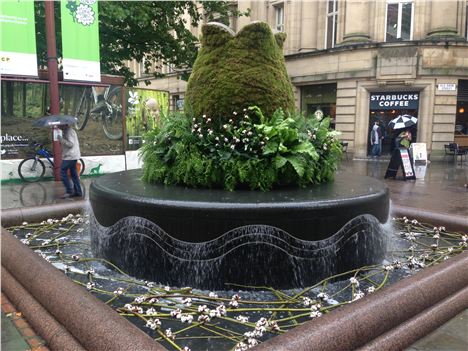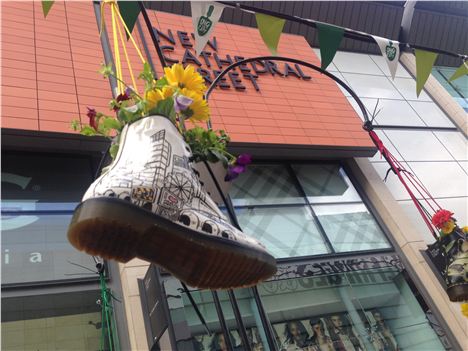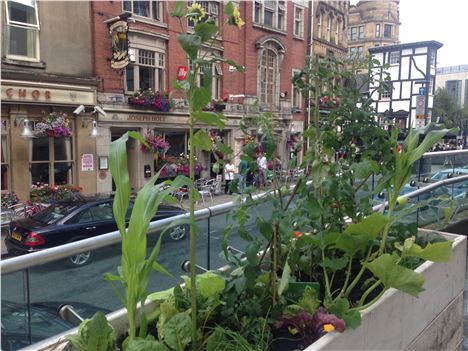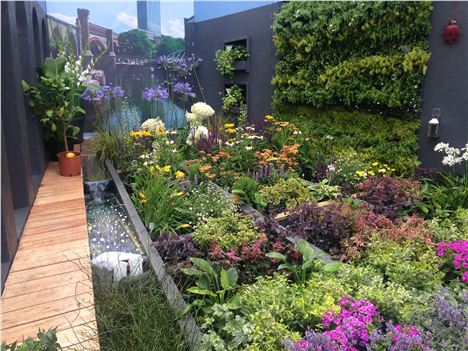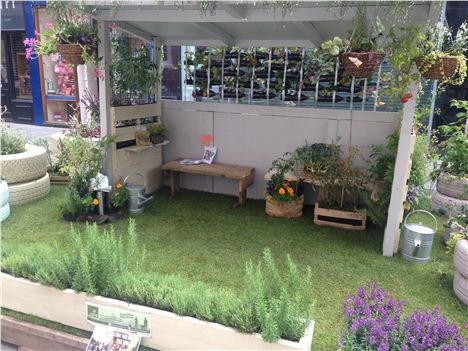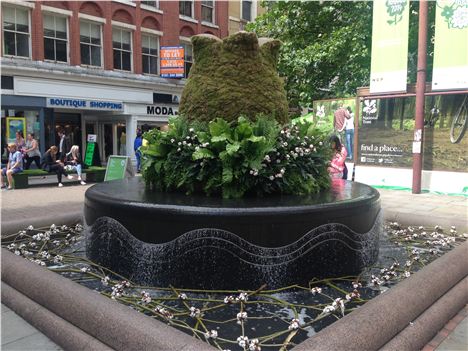TAKE one path in history and the Manchester we walk through is a Kirby Lonsdale or a Ludlow: small, ancient, reduced to quaintness yet every street a walk away from open country and clear rivers.
Are we doing enough in the city centre and the inner districts to bring nature into town, to make our public spaces blossom throughout the year, not just when festivals arrive?
The other path, the road first travelled by Manchester, led somewhere else.
It started with a city of excitement, rush, change and innovation but also human squalor and the utter degradation and death of the natural environment. A city where moths changed shade to match soot, where rivers ran solid, choked with human and industrial effluent.
Change lies at the heart of the human condition and to be at the start of something and to make things happen is meaningful. So Manchester within twenty years of the start of the nineteenth century was as much a symbol as a city: the embodiment of all the opportunities, but also the cost of an industrialised age.
Dig the City returns the heart of the medieval town to its intimate relationship with nature.
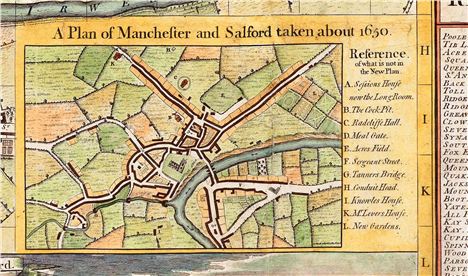 1650s Manchester - looking south east
1650s Manchester - looking south east
The Romans may have founded Manchester at Castlefield almost a mile down Deansgate, but it was round the Cathedral where the Saxons settled and from where Manchester blossomed.
At the point where Victoria Street crosses in front of Hanging Bridge, a water course, beneath ‘the hanging ditch’, fell as a cataract into the River Irwell. Here marigolds grew which women would pick for use as a base to lighten their hair.
The ancient bridge to Salford led across the river through a few houses to fields and farms, Victoria Station sits on orchards, Fennel Street was once Apple Market.
Meanwhile Piccadilly Gardens beyond the town limits was Daub Holes where clay for brick to build the orange-red houses of Manchester would be extracted. St Ann’s Square was Acresfield, a field where from the 1200s every September, the annual fair and cattle market took place. The triangular shape of Manchester Town Hall echoes the triangular meadow it sits upon.
Nature, of course, underpins the city at every point.
Dig the City makes that point very clearly.
Look up into the Cathedral tower and at the springing of one of the arches where Manchester’s green men grin, with foliage surrounding their heads, and have done so since the 1300s. These mysterious figures, probably pagan in origin, are part of numerous ancient flower and fauna references throughout the Cathedral, underlining - a very modern notion too - how Man must work with nature if he is to prosper.
 Green Men high in the Cathedral
Green Men high in the Cathedral
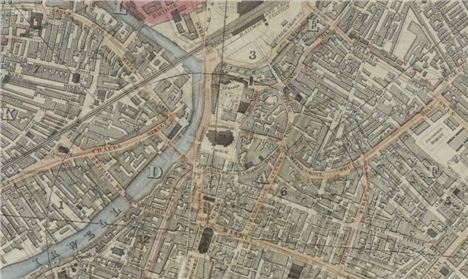 Manchester in 1848, looking north (thanks to the excellent http://manchester.publicprofiler.org/)
Manchester in 1848, looking north (thanks to the excellent http://manchester.publicprofiler.org/)
As Friedrich Engels described much of central Manchester in The Condition of the Working Class in England in 1844: ‘(There’s) irregular cramming together of dwellings in ways which defy all rational plan, of the tangle in which they are crowded literally one upon the other, it is impossible to convey an idea.’
Liam Curtin and Dreamscapes' Garden of Optical Illusions is a clever and gorgeous mix of viaducts and flowers, industry and nature, complete with a water feature and visual trick. Seek it out.
Flowers, mirrors, viaducts and cleverness - The Garden of Optical Illusions
Another of the best displays at this year's Dig The City event is the Nikal property company's design at ancient Hanging Ditch. Nikal has been generous across the three years of Dig the City with sponsorship, backing and getting actively involved.
This time their idea to tidy up and beautify the often scruffy gardens between Manchester Cathedral and Hanging Ditch wine merchants is set to become permanent. At last.
Maybe other companies can step in with planting and maintaining other abandoned pockets of the city centre?
Hanging Ditch with a permanent solution
Around some of the oldest areas of permanently occupied Manchester, Dig the City re-emphasises the relationship between nature and Man. It's a celebration of the mood of our times, where many are trying to rebuild the relationship between Man, Manc and the natural world that was ripped from this part of the city two hundred years ago.
Dig the City also asks questions of Manchester and Salford.
Are we doing enough in the city centre and the inner districts to bring nature into town, to make our public spaces blossom throughout the year, not just when festivals arrive?
Clearly the answer at present is no.
Frog Flower's lovely reinterpretation of one of the dreariest of all Manchester fountains, the dribbling St Ann's Square cotton bud, shows how imagination can re-animate just about anything. As stated above, couldn't a private company based in Manchester - as Nikal has done with Hanging Ditch - continue this work, sponsoring new schemes in future?
Frog Flowers' inspired design for a rubbish fountain
But that’s a question for after we’ve wandered through the flowers and gardens of Dig the City, enjoying this fresh marriage of town and country. And maybe the odd cheeky beer as well in the array of food and drink outlets.
Dig the City finishes on Sunday 10 August. For full listing of the events and the areas you can visit click here. Much of this article first appeared in the Dig the City brochure.
You can follow Jonathan Schofield on Twitter here @JonathSchofield









